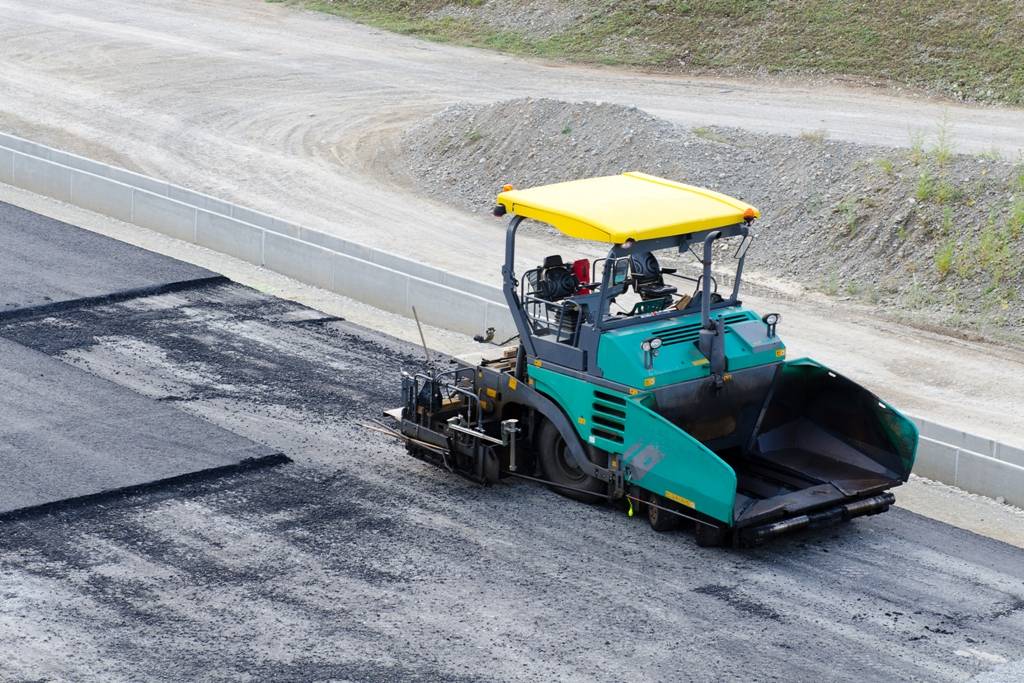There has been an increased amount of heavy load carrying vehicles using our main roadway systems. The heavy, and often overweight vehicles is one of the main reasons for the deformation of the bitumen/asphalt based road systems.
The properties of bitumen are modified by the addition of special polymer additives. A “Modified Bitumen” product is the result of this process. The special additives increase the heat and cold resistance as well as the resilience of the adhesive material necessary for the modified bitumen to properly adhere to the road surface. Additionally, these special additives will increase the resilience of the road surface when under great stress and thereby prolong the service life of the roadway. It is therefore, the use of “Modified Bitumen” that will greatly improve and prolong the ability of the road surface to resist the stresses and abuses from overweight vehicle traffic.
The chemical additives known as “atactic polypropylene,” isotactic polypropylene,” and s”tyrene-butadiene-styrene” are mostly used as modifiers for the bitumen products. Such mixtures as rubber modified bitumen or plasticated bitumen (raw material, made on the basis of rubber and bitumen) as well as atactic polypropylene modifier are much less common for use in the production of modified bitumen. Each type of additive however, has a wide range of properties that can be both beneficial, as well as harmful to modified bitumen products.
An example of a beneficial additive is an increased resistance to the effects Ultra Violet Radiation (UV) and chemical resistance to alkali and acid solutions made possible with the inclusion of atactic polypropylene additives. Additionally, they make the road surface more resistant to high temperature extremes and more adhesive to metal and glass surfaces and particles.
All the materials for manufacturing modified bitumen provide a “ready mixture” for use with such performance characteristics as cold resistance and elasticity. These characteristics help the mixture to take a set form.
In many parts of the world, modified bitumen production is performed at oil refineries or at special concentration plants under constant laboratory quality controls. The equipment for modified bitumen production is available around the world and is capable of producing a wide range of products to meet a wide range of applications.
The manufacturing of modified bitumen equipment is customized not only in China, Europe or America, but also in the Common Wealth of Independent States (CIS). All these countries have built up a great demand for bitumen production equipment.
There are two traditional ways to manufacture modified bitumen. They are both based on the use of modern blending equipment.
One way is that modified bitumen is manufactured by making bitumen-polymer dispersion in colloid mills with a large shear force. The other method consists of adding polymer to bitumen. The latter process is done with the help of colloid mills that rotate slowly with only minor shear force.
The changes made to the polymer molecular structure is the main disadvantage of using the colloid mills. The problem is that at the the end of the blending process, the average molecular weight of the polymer will have been reduced.
Modified bitumen equipment usually will consist of the following items: (1) bitumen heater (where original bitumen is warmed up); (2) a gear-type pump; (3) a container for blending; and (4) blending equipment (namely colloid mills of different kinds). After blending, the original material and modifiers make up a homogeneous mixture called modified bitumen.
In the first stage of processing, the modified bitumen is fed to a heater with the help of a gear-type pump. In the latter stages, another pump supplies this mixture directly to the asphalt-concrete paver, or it can be packaged for long or short term storage in the form of briquettes. At all stages of modified bitumen production the heating is performed by using the electrical tape heaters.
The modern process of modified bitumen production is automated. Temperature control and monitoring as well as weighing and metering of plasticizer and modifier are all carried out automatically.
The quality of modified bitumen is first checked by a well trained eye and then samples are taken for laboratory analysis to fully ensure quality and compliant with laws and regulations.

